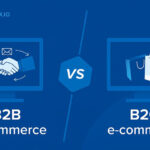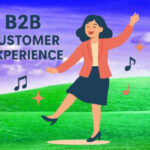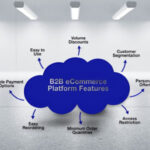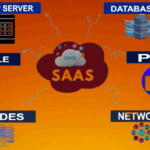
B2B Sales: Strategies, Challenges, and the Future of Business-to-Business Selling
Introduction
In today’s interconnected marketplace, B2B sales (business-to-business sales) play a pivotal role in driving growth, innovation, and value creation. Unlike B2C sales (business-to-consumer), where companies sell directly to individuals, B2B sales involve complex transactions between businesses. These transactions often feature larger deal sizes, longer sales cycles, and multiple decision-makers. From software providers and logistics companies to manufacturers and consulting firms, B2B sales power industries across the globe.
This article explores the nature of B2B sales, the differences from B2C selling, proven strategies, key challenges, and the evolving landscape shaped by digital transformation.
Understanding B2B Sales
At its core, B2B sales occur when one business sells its products, services, or solutions to another business. For example, an ERP software provider selling its platform to a manufacturing company is engaging in B2B sales. The ultimate aim is to solve problems, increase efficiency, reduce costs, or enable revenue growth for the buyer.
The defining characteristics of B2B sales include:
-
Longer Sales Cycles – Closing deals can take weeks or even months due to research, evaluations, and approvals.
-
High Value Transactions – Deal sizes are typically larger because they involve bulk purchases or enterprise-level solutions.
-
Multiple Stakeholders – Purchasing decisions often involve executives, finance teams, technical experts, and end-users.
-
Solution-Oriented Selling – B2B sales focus on addressing business challenges rather than personal desires.
B2B vs. B2C Sales
Although both involve selling, the approaches differ significantly:
-
Target Audience:
-
B2C: Individual consumers.
-
B2B: Organizations or professional buyers.
-
-
Buying Motivation:
-
B2C: Emotional drivers like desire, status, or convenience.
-
B2B: Rational drivers such as ROI, efficiency, compliance, or scalability.
-
-
Sales Cycle:
-
B2C: Short, often impulsive.
-
B2B: Extended, requiring relationship building.
-
-
Decision-Makers:
-
B2C: Typically one person.
-
B2B: Committees or cross-functional teams.
-
Understanding these differences is crucial for developing effective B2B sales strategies.
The B2B Sales Process
A structured process helps organizations manage complex B2B transactions. The stages typically include:
-
Lead Generation
Attracting potential clients through marketing, referrals, events, or online campaigns. -
Qualification
Assessing whether leads are a good fit based on budget, authority, need, and timeline (BANT framework). -
Needs Assessment
Engaging prospects to understand their challenges and objectives. -
Presentation and Demonstration
Delivering tailored proposals or product demos that highlight value. -
Objection Handling
Addressing concerns related to cost, implementation, or compatibility. -
Negotiation and Closing
Agreeing on pricing, contracts, and terms to finalize the deal. -
Post-Sale Support
Ensuring customer success through onboarding, training, and ongoing service.
Key Strategies for Effective B2B Sales
1. Relationship Building
Trust is the foundation of B2B sales. Building long-term partnerships requires consistent communication, reliability, and delivering on promises.
2. Consultative Selling
Rather than pushing products, consultative selling focuses on understanding a client’s problems and offering tailored solutions. This positions the salesperson as a trusted advisor.
3. Account-Based Marketing (ABM)
ABM aligns sales and marketing to target high-value accounts with personalized campaigns, improving conversion rates.
4. Data-Driven Insights
Leveraging CRM systems and analytics allows sales teams to track buyer behavior, forecast trends, and optimize outreach.
5. Content Marketing and Thought Leadership
Publishing whitepapers, webinars, and case studies demonstrates expertise and nurtures leads through the sales funnel.
6. Social Selling
Platforms like LinkedIn enable sales professionals to engage with decision-makers, share insights, and build credibility.
7. Value-Based Pricing
Highlighting measurable ROI and cost savings helps justify investment, especially for enterprise-level solutions.
Challenges in B2B Sales
Despite its potential, B2B sales come with significant hurdles:
-
Complex Decision-Making
Dealing with multiple stakeholders can slow the process and create conflicting requirements. -
Intense Competition
Globalization and digital tools have lowered entry barriers, increasing competition across industries. -
Long Sales Cycles
Extended negotiations demand persistence and resources. -
Buyer Skepticism
Buyers today are well-informed and skeptical of sales pitches, making authenticity essential. -
Economic Uncertainty
Budget constraints or market shifts can delay or cancel deals.
The Role of Technology in B2B Sales
Digital transformation is reshaping how businesses approach sales. Key technologies include:
-
Customer Relationship Management (CRM)
Tools like Salesforce or HubSpot streamline lead tracking, communication, and performance analysis. -
Artificial Intelligence (AI)
AI-powered chatbots, predictive analytics, and lead scoring enhance efficiency and personalization. -
Automation Tools
Automating repetitive tasks, such as follow-up emails, frees sales reps to focus on high-value interactions. -
Video Conferencing
Platforms like Zoom or Microsoft Teams enable remote demos and global collaboration. -
E-commerce Platforms
More B2B companies now allow self-service purchases online, reducing friction for repeat transactions.
Measuring B2B Sales Success
Key performance indicators (KPIs) help organizations track progress. Common metrics include:
-
Conversion Rate – Percentage of leads that become customers.
-
Average Deal Size – Value of closed deals.
-
Sales Cycle Length – Time taken from initial contact to closing.
-
Customer Lifetime Value (CLV) – Revenue expected from a customer over the relationship duration.
-
Churn Rate – Percentage of customers lost over time.
By analyzing these metrics, businesses can refine strategies and allocate resources effectively.
The Future of B2B Sales
Several trends are shaping the future landscape:
-
Hybrid Selling Models
Combining digital channels with face-to-face interactions for flexibility and efficiency. -
Personalization at Scale
AI and data analytics enable hyper-personalized outreach tailored to each buyer’s needs. -
Sustainability and Ethics
Buyers increasingly prioritize vendors who demonstrate environmental responsibility and ethical practices. -
Customer-Centric Experiences
Focus is shifting from closing deals to ensuring long-term success and satisfaction. -
Globalization of Sales
Digital tools are breaking down geographic barriers, allowing companies to compete internationally.
Case Study: B2B SaaS Sales
Consider a SaaS (Software-as-a-Service) provider selling project management software to large enterprises. The sales journey might involve:
-
Identifying industries like construction or IT that need project coordination.
-
Reaching out to decision-makers via LinkedIn campaigns.
-
Hosting webinars to showcase time-saving features.
-
Providing free trials to reduce adoption risk.
-
Offering tiered pricing models based on usage.
By emphasizing efficiency, collaboration, and measurable ROI, the SaaS company can secure contracts worth hundreds of thousands annually.
Best Practices for B2B Sales Teams
-
Invest in Training – Continuous learning in negotiation, communication, and technology keeps teams competitive.
-
Collaborate Across Departments – Aligning sales with marketing and customer success ensures a smooth buyer journey.
-
Prioritize Customer Success – Happy clients lead to renewals, referrals, and upselling opportunities.
-
Leverage Storytelling – Sharing success stories humanizes the sales process and builds trust.
-
Stay Agile – Adapting to market changes and buyer preferences is critical for long-term success.
Conclusion
B2B sales are far more than transactions—they are partnerships built on trust, problem-solving, and shared growth. The complexity of decision-making, the need for consultative approaches, and the reliance on long-term value distinguish B2B sales from consumer-focused strategies. As technology evolves and buyer expectations shift, businesses must embrace data-driven insights, personalized engagement, and customer-centric practices to thrive.
Ultimately, success in B2B sales depends on one principle: delivering measurable value to clients. Companies that understand this will not only close deals but also build lasting relationships that fuel sustained growth in the ever-changing business landscape.
















